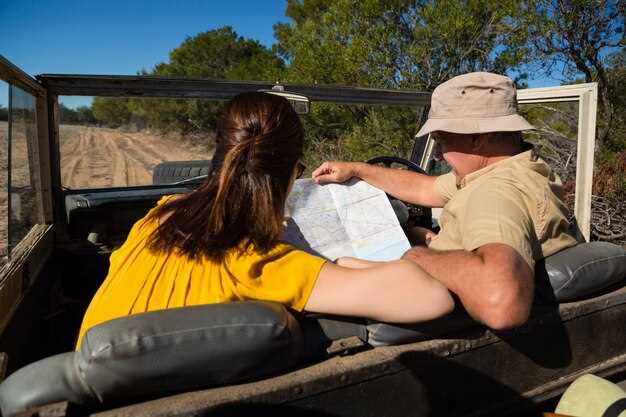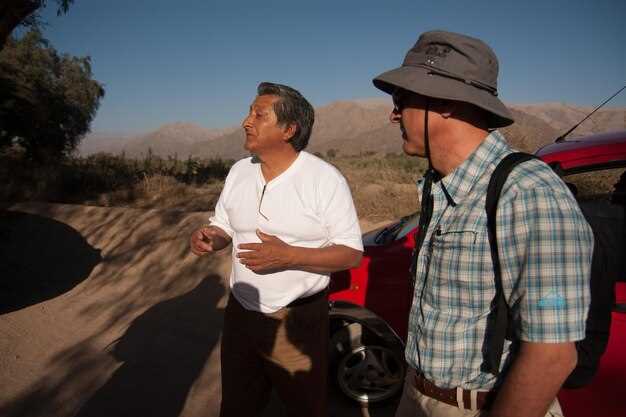
Embarking on a Jeep trail adventure with a group can be one of the most exhilarating experiences one can have. The thrill of navigating through rugged terrains, the bonding moments shared with friends or family, and the stunning landscapes that unfold are all key ingredients to an unforgettable journey. To make the most out of your Jeep trail adventure, careful planning is essential to ensure that every participant enjoys the ride to its fullest.
When organizing a group outing, consider the diverse interests and skill levels of your participants. Whether they are seasoned off-roaders or newcomers eager to explore, it’s crucial to select a trail that accommodates everyone. Research different trails, considering factors such as difficulty, scenery, and accessibility. A well-balanced itinerary allows each group member to engage and create lasting memories, making the adventure worthwhile.
In addition to choosing the right trail, ensure your group is equipped with the necessary gear and supplies for a successful trip. From maps and safety kits to snacks and water, preparation can make the difference between a seamless journey and potential challenges along the way. By prioritizing organization and communication, you can enhance the camaraderie within your group and pave the way for an extraordinary Jeep trail experience.
Choosing the Right Trail for Your Jeep Group

Selecting the perfect trail for your Jeep group is crucial for ensuring an unforgettable adventure. The right ride can transform a simple outing into a memorable experience for everyone involved. Here are several factors to consider when choosing a trail.
Skill Level: Assess the skill levels of all group members. Some may be experienced off-roaders, while others might be beginners. Select a trail that matches the skills of the majority, allowing everyone to enjoy the ride without feeling overwhelmed or under-challenged.
Trail Conditions: Investigate the trail conditions ahead of time. Weather can significantly affect the terrain, so check for factors such as mud, snow, or possible obstacles. This information will help you prepare your group for the challenges they may face during the ride.
Length and Duration: Consider the length of the trail and how much time your group has available. A longer trail may offer breathtaking views and diverse scenery but can also be tiring. Ensure that the ride fits within your group’s schedule to maintain energy and enthusiasm throughout the journey.
Scenic Value: Choose a trail known for its beautiful landscapes and unique geological features. A visually stunning environment will enhance the overall experience, making every moment spent on the trail more rewarding for the entire group.
Safety Regulations: Familiarize yourself with any safety regulations or required permits for the selected trail. Following the local guidelines helps ensure a safe and enjoyable experience for everyone and protects the natural environment you are exploring.
By carefully considering these aspects, you can select a trail that caters to your group’s preferences and capabilities, ensuring a memorable and exhilarating Jeep ride that everyone will cherish.
Essential Gear and Supplies for a Safe Trail Ride

Preparing for a group Jeep trail adventure requires careful consideration of the essential gear and supplies necessary for a safe and enjoyable ride. Here is a comprehensive list to ensure your trip is both thrilling and secure.
1. Navigation Tools: Reliable navigation is vital for any trail ride. Equip your group with detailed maps of the trails, a GPS device, or a smartphone with offline maps. A compass can also be a backup navigation tool to prevent getting lost in remote areas.
2. Safety Gear: Each vehicle should carry essential safety gear, including a first-aid kit, flashlights with extra batteries, and a fire extinguisher. A multi-tool or a set of basic tools will be helpful for quick repairs on the trail.
3. Recovery Gear: Recovery equipment is crucial for overcoming potential obstacles. Items like a winch, recovery straps, and shackles should be included in your supplies. A shovel can also assist in clearing pathways if necessary.
4. Communication Devices: Keeping in touch with your group is important, especially in areas with limited cell service. Walkie-talkies or two-way radios are excellent choices for maintaining communication. Ensure everyone understands the communication protocol before setting off.
5. Essential Supplies: Carry sufficient water and food for the duration of your trail ride. Hydration is crucial, and having snacks on hand will keep energy levels high. A cooler with ice packs can help keep perishables fresh.
6. Clothing and Gear: Dress appropriately for varying weather conditions. Layers are recommended, along with sturdy footwear. Don’t forget sun protection, such as hats, sunglasses, and sunscreen, to guard against exposure during outdoor adventures.
7. Spare Parts and Tools: Anticipate potential mechanical issues by bringing spare parts like belts, hoses, and fuses specific to your vehicle. Basic tools, including wrenches and screwdrivers, should be included in your gear for on-the-spot adjustments.
8. Trash and Waste Management: It’s essential to respect nature by keeping the trails clean. Bring trash bags to collect waste and, if necessary, portable toilets for areas lacking facilities. Encourage your group to practice Leave No Trace principles during the ride.
By assembling these essential gear and supplies, you can ensure that your group enjoys a memorable and safe trail ride. Preparation is key to navigating challenges effectively and making the most of your Jeep adventure.
Coordinating Group Safety and Communication on the Trail
Ensuring safety and effective communication during a jeep trail adventure is essential for an enjoyable experience. The first step is to establish a clear plan that includes roles and responsibilities for each member of the group. Assign a lead driver who is familiar with the trail and its challenges. This person will guide the rest of the group and make key decisions regarding the route and stops.
Next, equip each jeep with a reliable communication device, such as two-way radios or a group messaging app, to maintain contact throughout the ride. This allows quick updates about terrain conditions, obstacles, or any emergencies that may arise. Clearly outline hand signals and voice commands that will be used to convey important information, such as the need to stop or slow down.
Before hitting the trail, conduct a safety briefing to review important guidelines. Emphasize the importance of keeping a safe distance between vehicles, especially on narrow or slippery sections of the trail. Encourage all participants to watch for hazards and to communicate any concerns immediately to the group. Everyone should also carry a basic first aid kit and know the location of emergency supplies in their jeep.
Regularly scheduled rest stops should be planned to allow everyone to regroup, discuss the drive, and address any issues that may have occurred. These stops provide an opportunity to reassess the group’s dynamics and adjust plans according to the group’s capabilities and preferences. Encourage open dialogue so that everyone feels comfortable voicing their needs and concerns.
Incorporating these safety and communication strategies will enhance coordination and create a more enjoyable jeep trail adventure. When everyone is informed and prepared, the ride becomes not just safer but also more memorable.




